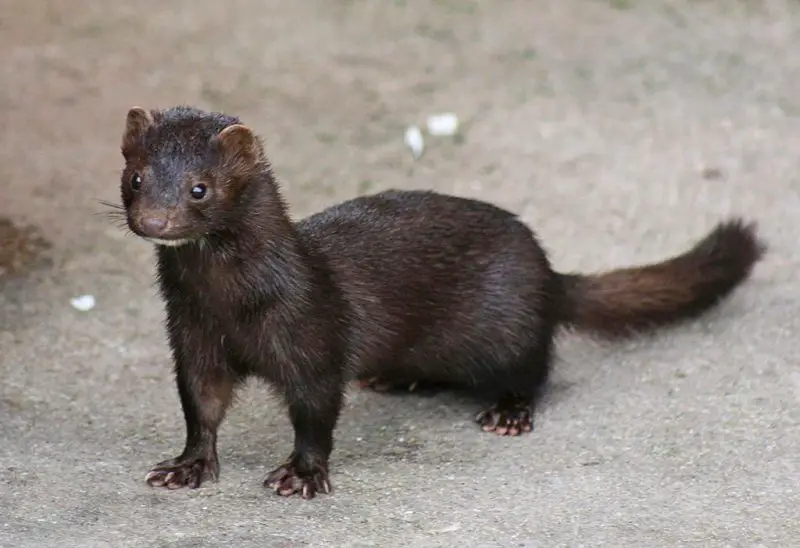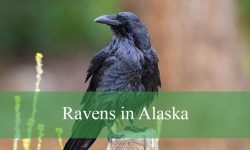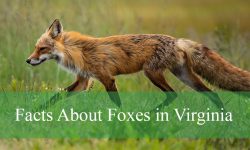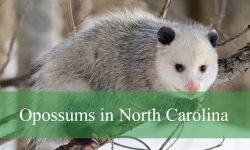Maine, with its expansive forests, wetlands, and farmlands, is home to a fascinating array of wildlife. Among the most elusive and intriguing of these are the weasels, small carnivorous mammals that play an essential role in the local ecosystem. Their slender bodies, swift movements, and remarkable hunting skills make them both fascinating and challenging to observe in the wild. In this guide, we will explore the three types of weasels found in Maine, their unique characteristics, habitats, behaviors, and tips for identification. This article is intended to help nature enthusiasts, photographers, and wildlife observers better understand these agile predators.
Weasels are part of the Mustelidae family, which also includes minks, otters, and ferrets. Despite their small size, weasels are skilled hunters capable of taking down prey larger than themselves. They are integral to maintaining balanced populations of small mammals, such as mice, voles, and rabbits, which are common in Maine’s varied ecosystems. Learning to recognize the different species can enrich any wildlife experience in the region.
Understanding weasels in Maine requires attention to detail. While they share similar body shapes, each species has distinct size ranges, fur coloration, and behavioral patterns. Observing these characteristics closely allows enthusiasts to identify species even when sightings are brief or limited to tracks and signs in the snow.
Least Weasel (Mustela nivalis)

Physical Characteristics and Identification
The Least Weasel is the smallest of Maine’s weasel species and one of the tiniest carnivores in North America. Adult males typically measure between 6 and 8 inches in body length, while females are slightly smaller, averaging around 5 to 6 inches. The tail is short, usually around 1.5 to 2 inches long, contributing to its compact appearance. Its slender, elongated body and short legs allow it to move quickly through dense vegetation and tight burrows.
The fur coloration of the Least Weasel is an excellent example of seasonal adaptation. During the summer months, the back is reddish-brown or tawny, contrasting with a creamy white underside. In northern populations, the fur turns entirely white during winter, providing perfect camouflage against snow. This seasonal color change is critical for avoiding predators while hunting. The Least Weasel has small, rounded ears and sharp, pointed teeth adapted for capturing and killing small prey efficiently.
Behavior and Hunting
Least Weasels are highly energetic and primarily nocturnal, although they may be seen during the day in areas with minimal human disturbance. They are solitary animals, fiercely territorial, and spend much of their time hunting. Their diet consists mainly of small rodents, such as mice, voles, and shrews. They are capable of entering burrows, thanks to their narrow bodies, to pursue prey.
This species exhibits remarkable agility and speed, which makes it an efficient predator despite its small size. Mating occurs in late spring, and after a gestation period of around a month, females give birth to litters ranging from three to eight kits. Juveniles develop quickly, gaining hunting skills within a few weeks of birth.
Habitat and Distribution
The Least Weasel is widely distributed throughout Maine. It inhabits a variety of habitats, including forests, grasslands, agricultural fields, and areas near water sources. They prefer regions with abundant ground cover and high prey density. Although Least Weasels are adaptable, they are more frequently observed in rural and semi-rural areas than in densely populated towns or cities. Observing them in the wild requires patience, as their small size and rapid movements make them easy to miss.
Long-tailed Weasel (Mustela frenata)

Physical Characteristics and Identification
Slightly larger than the Least Weasel, the Long-tailed Weasel is recognized by its long, slender body and a tail that is notably longer than that of its smaller cousin. Adult Long-tailed Weasels measure between 12 and 16 inches in body length, with tails ranging from 4 to 7 inches. Their fur is reddish-brown on the back, with a creamy or white belly, and the tail often ends in a distinctive black tip, which is one of the easiest ways to differentiate this species from the Least Weasel.
Unlike the Least Weasel, Long-tailed Weasels exhibit less dramatic seasonal color changes. While northern populations may turn mostly white in winter, the black-tipped tail remains a distinguishing feature. Their sharp eyes, pointed snout, and muscular limbs make them exceptional hunters, capable of both climbing and swimming. These physical adaptations allow them to exploit a broader range of habitats and prey.
Behavior and Hunting
Long-tailed Weasels are versatile predators with a diet that extends beyond small rodents to include rabbits, birds, eggs, and even insects. They are primarily nocturnal but may be active during the day in secluded areas. Their hunting style is characterized by a combination of stealth, speed, and persistence. Long-tailed Weasels are known to pursue prey into burrows or dens, sometimes killing animals much larger than themselves.
Reproduction occurs in spring, with females giving birth to litters of four to six kits after a gestation period of about 30 days. Juveniles develop rapidly and can hunt independently within two months. Long-tailed Weasels are territorial and mark their ranges with scent glands to ward off intruders. Their adaptability allows them to thrive in forests, wetlands, and even farmlands across Maine.
Habitat and Distribution
In Maine, Long-tailed Weasels are common and occupy a diverse array of habitats. They are frequently found in deciduous and mixed forests, along riverbanks, in wetlands, and near human settlements where prey is abundant. Their ability to climb and swim allows them to access prey in multiple environments. Observing these weasels can be challenging due to their elusive nature, but signs such as tracks, scat, and small prey remains can indicate their presence.
Mink (Neovison vison) – Often Considered Alongside Weasels

Physical Characteristics and Identification
While not a true weasel, the American Mink is often grouped with weasels due to its similar body structure and behavior. Adult minks are larger than Long-tailed Weasels, measuring 12 to 18 inches in body length with a tail of 6 to 9 inches. Their fur is dark brown to almost black, with a creamy white patch often visible on the throat and chest. This glossy coat is prized in the fur industry but also serves as excellent camouflage along waterways.
Minks have a more robust body compared to other weasels, with webbed feet adapted for swimming. Their sharp teeth and muscular jaws allow them to capture a wide range of prey, including fish, amphibians, small mammals, and birds.
Behavior and Hunting
American Minks are semi-aquatic and are often found near rivers, streams, ponds, and wetlands. They are highly territorial and solitary, hunting both on land and in water. Minks are active mainly at night, though they may be observed during dawn or dusk. They feed on a varied diet, showing adaptability in hunting techniques. Their hunting style includes diving underwater to catch fish and probing burrows to capture rodents.
Reproduction occurs in late winter to early spring, with females giving birth to litters of three to six kits after a gestation period that may include delayed implantation. Minks raise their young in dens located along riverbanks, which often have multiple entrances for escape from predators.
Habitat and Distribution
In Maine, minks are found throughout the state wherever water sources are abundant. They are especially common along rivers, lakes, and coastal marshes. Unlike the smaller weasels, minks’ semi-aquatic lifestyle makes them more visible near water, and their tracks in soft mud or snow are often easier to identify than the tiny prints of Least or Long-tailed Weasels. Minks play an essential role in controlling populations of aquatic and semi-aquatic prey, contributing to balanced ecosystems.
Comparison of Weasel Species in Maine
Feature |
Least Weasel (Mustela nivalis) |
Long-tailed Weasel (Mustela frenata) |
American Mink (Neovison vison) |
|---|---|---|---|
Size |
5–8 inches body, 1.5–2 inch tail |
12–16 inches body, 4–7 inch tail |
12–18 inches body, 6–9 inch tail |
Weight |
1–2 oz |
3–8 oz |
1–3 lbs |
Fur Color |
Summer: reddish-brown back, white belly; Winter: all white (northern) |
Summer: reddish-brown back, white belly; Winter: may turn pale, black-tipped tail remains |
Dark brown to black, white throat/chest patch |
Behavior |
Nocturnal, solitary, fast, burrow hunter |
Nocturnal, solitary, agile, climbs and swims |
Semi-aquatic, nocturnal, solitary, swims and hunts on land |
Diet |
Small rodents, shrews |
Rodents, rabbits, birds, insects |
Fish, amphibians, small mammals, birds |
Habitat |
Forests, grasslands, farmlands |
Forests, wetlands, farmland edges |
Rivers, streams, lakes, wetlands |
Reproduction |
Litter: 3–8 kits |
Litter: 4–6 kits |
Litter: 3–6 kits, dens near water |
Seasonal Adaptation |
White winter coat (northern populations) |
Some northern populations turn pale |
No major seasonal coat change, stays dark |
Distinctive Feature |
Smallest weasel, short tail |
Long tail with black tip |
Semi-aquatic, larger, dark glossy fur |
Tips for Observing and Identifying Weasels in Maine
Observing weasels in the wild can be challenging due to their small size, rapid movements, and elusive behavior. Dawn and dusk are the best times to spot them, as they are most active during these periods. Areas with dense ground cover, abundant prey, and minimal human disturbance increase the likelihood of sightings.
Paying attention to tracks, scat, and small prey remains can provide clues to their presence. In winter, the seasonal color changes of Least and Long-tailed Weasels make them more visible against snow, although they remain extremely quick and difficult to approach. Long-tailed Weasels can often be distinguished from Least Weasels by their longer tail and black-tipped end, while minks are recognizable by their dark fur and proximity to water.
Photography enthusiasts should use quiet approaches and long lenses to capture images, as sudden movements can easily scare these animals away. Understanding their habitat preferences and behavior patterns is key to successful observation.
Ecological Role and Conservation
Weasels in Maine serve a crucial ecological role by controlling populations of small mammals and maintaining balanced ecosystems. Their predation helps prevent overpopulation of rodents, which could otherwise damage crops, spread disease, and disrupt natural vegetation. Minks additionally influence aquatic and semi-aquatic communities through their predation on fish, amphibians, and small birds.
Although Least and Long-tailed Weasels are generally stable in population, habitat destruction, pollution, and human disturbance can negatively impact their numbers. American Minks face additional threats from trapping and fur harvesting, although conservation measures and regulated trapping practices have helped maintain healthy populations. Observing weasels responsibly without disturbing their habitat is essential to preserving these fascinating predators for future generations.
Conclusion
Maine’s weasel species—the Least Weasel, Long-tailed Weasel, and American Mink—are small yet remarkable members of the state’s wildlife community. Each species possesses unique adaptations that allow it to thrive in specific habitats, whether dense forests, open fields, or aquatic environments. Recognizing their physical traits, behavior, and habitat preferences can greatly enhance wildlife observation experiences.
These weasels, though elusive and difficult to spot, are vital components of Maine’s ecosystems. They help regulate populations of small mammals and maintain ecological balance. For wildlife enthusiasts, photographers, and naturalists, learning to identify these species offers both challenges and rewards, making the pursuit of spotting them in the wild a truly enriching experience.
By understanding their behavior, recognizing seasonal changes in appearance, and respecting their habitats, observers can appreciate the full beauty and importance of these agile predators in Maine’s rich natural landscape.
FAQs about Weasels in Maine
What is the easiest way to identify a Least Weasel in Maine?
The Least Weasel can be identified by its tiny size, short tail, and seasonal color change. In northern winters, the white coat helps it blend with snow, making its small, fast-moving body easier to distinguish from other weasels.
How can I tell a Long-tailed Weasel from a Least Weasel?
The Long-tailed Weasel is significantly larger and has a long tail with a black tip. Its reddish-brown back and cream-colored belly remain visible even in winter for southern populations. Observing the tail and size are the easiest ways to differentiate them.
Are American Minks considered true weasels?
While American Minks are part of the Mustelidae family and share similarities with weasels, they are not classified as true weasels. They are semi-aquatic predators with darker, glossier fur and a preference for habitats near water.
When is the best time to observe weasels in Maine?
Weasels are primarily nocturnal and crepuscular, meaning they are most active during dawn and dusk. Observing them during these periods increases the chance of sightings.
Where in Maine am I most likely to spot each species?
Least Weasels are common in forests, grasslands, and fields. Long-tailed Weasels inhabit forests, wetlands, and farmland edges. Minks are found near rivers, streams, lakes, and wetlands throughout the state.
What do weasels eat in Maine?
Least Weasels primarily hunt small rodents and shrews. Long-tailed Weasels have a more varied diet including rodents, rabbits, birds, and insects. American Minks eat fish, amphibians, small mammals, and occasionally birds.
Are weasels dangerous to humans or pets?
Weasels are not considered dangerous to humans. However, they are skilled hunters and may prey on small pets like birds or rodents if given the opportunity. Observing them without disturbing their habitat is recommended.






